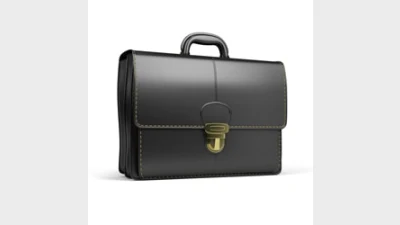Preparing for a SMSF trustee's death



Holding large value illiquid assets in a SMSF could prove problematic when a trust member dies. Deborah Wixted explains the obligations and options trustees and their financial advisers should consider in the event of a member death.
Acquiring and investing in business real property (BRP) continues to be a popular strategy for self-managed super funds (SMSFs). However, trustees should consider the consequences of holding large value illiquid assets in the event of the death of a fund member.
In general, there may be two competing priorities:
- The desire of surviving members of the fund to retain assets, like BRP, within the concessionally taxed environment of the SMSF — particularly if the BRP is being used in a related party’s business.
- The need for the trustees to sell the asset to fund a lump sum death benefit payment.
It is important for SMSF trustees and their advisers to understand their obligations and options following the death of a member when it comes to investing in large value illiquid assets.
What are the key superannuation considerations for paying super death benefits?
A SMSF must cash out a deceased member’s benefit as a lump sum, pension or a combination of both, with the nature of the benefit recipient determining exactly which of those forms of benefit payment can be used.
Adult children and the deceased’s legal personal representative are restricted to lump sum benefits only. A spouse, child under 18 or someone in an interdependency relationship with the deceased are able to take a death benefit as either a lump sum or an income stream.
Therefore, other than commencing a death benefit pension, a SMSF does not have the option to roll over or create a new interest in the fund directly using the deceased’s benefit. If a death benefit pension is paid to a beneficiary who is not an existing member of the SMSF, the beneficiary must become a member and trustee of the SMSF.
Can a large value illiquid asset be used to pay a death benefit pension?
The simplest way for the trustee of a SMSF to retain an illiquid asset is to pay the death benefit in the form of a pension with the asset used to support the pension. As noted above, however, this will depend on the trustee’s ability to pay the death benefit as a pension.
Additionally, a SMSF must have sufficient cash flow to meet its ongoing pension payments. If the income from the asset, such as rent, isn’t sufficient to meet the required pension payments, the trustee may have to dispose of that or another asset held by the fund for reinvestment in more liquid, income-producing assets.
Can a large value illiquid asset be retained in a SMSF if a lump sum death must be paid?
In general, if a SMSF must pay a lump sum death benefit (eg, where the sole beneficiary of the deceased member is an adult child), assets of the fund must be realised if there is insufficient cash in the fund to make the payment.
However, it may be possible to retain a large value illiquid asset within the SMSF if the beneficiary can make a cash contribution to the SMSF of an amount equal to the value of the lump sum death benefit payment. The SMSF could then use the cash contributed by the child to pay the lump sum death benefit.
There are several other issues to be considered when recommending such a strategy:
- The beneficiary must become a member of the SMSF if this is not already the case. The fund’s trust deed must allow this, and the beneficiary cannot be a disqualified person;
- The beneficiary must be eligible to make a contribution to super and be mindful of the relevant contributions caps;
- The beneficiary must have sufficient financial means to make the necessary contribution. If the beneficiary contemplates short-term borrowings to finance the contribution, the relevant interest costs will not be tax deductible; and
- The relevant transactions cannot simply be book or journal entries in the fund’s accounts.
Alternatively, the SMSF trustees could consider taking out life insurance policies on each member of the fund, with the insurance proceeds funding any death benefit payment.
Here, the same asset exchange principle can apply, with the insurance proceeds held in reserve — rather than including them in the calculation of the member’s death benefit.
To adopt this strategy, the trust deed of the SMSF must allow the trustees to:
- Acquire and maintain policies of life insurance;
- Allocate any insurance proceeds to a reserve and not include them as part of a member’s death benefit; and
- Establish and use reserves within the fund in accordance with superannuation and taxation law.
If an asset can’t be retained in the SMSF, must the trustee dispose of it on the market?
Where a lump sum death benefit must be paid and the SMSF trustee cannot avoid having to dispose of the asset, a trustee could instead make an in-specie death benefit payment. The beneficiary may favour this, because it could mean that they won’t lose control of the asset.
There are restrictions on a SMSF acquiring an asset from a related party, but there are no similar restrictions on a SMSF selling an asset or making a payment in-specie to a related party.
However, trustees must ensure that all such transactions are at arm’s length terms and at market value.
If only a portion of the asset is required to be paid as a lump sum death benefit (eg, if the fund’s assets consist of a single property and the deceased’s entitlement accounts for a portion of its value) it is possible for the fund to transfer an interest in the asset to the beneficiary.
The beneficiary could then hold the asset as tenants in common with the SMSF, with any future earnings and capital gains split in line with the ownership percentages of the two entities.
While not eliminating potential capital gains tax liabilities, being able to make in-specie lump sum death benefit payments may mean trustees can avoid:
- Having to sell an asset in difficult economic circumstances or at the wrong time in the economic cycle; and
- Incurring expensive valuation and transaction costs.
Deborah Wixted is head of technical services at Colonial First State.
Recommended for you
When entering paid employment, it’s not long before we are told that we’ll need to lodge a tax return but there are times when a person will be excepted.
Anna Mirzoyan examines how grandfathering affects income support payments and how factors such as paying for aged care can impact them.
There are specific requirements that only apply to trustees of self-managed superannuation funds, writes Tim Howard, including the allocation in their investment strategy.
Investments bonds offer a number of flexible, tax-advantaged benefits, writes Emma Sakellaris, but these are often overlooked as old fashioned when it comes to portfolio allocations.











